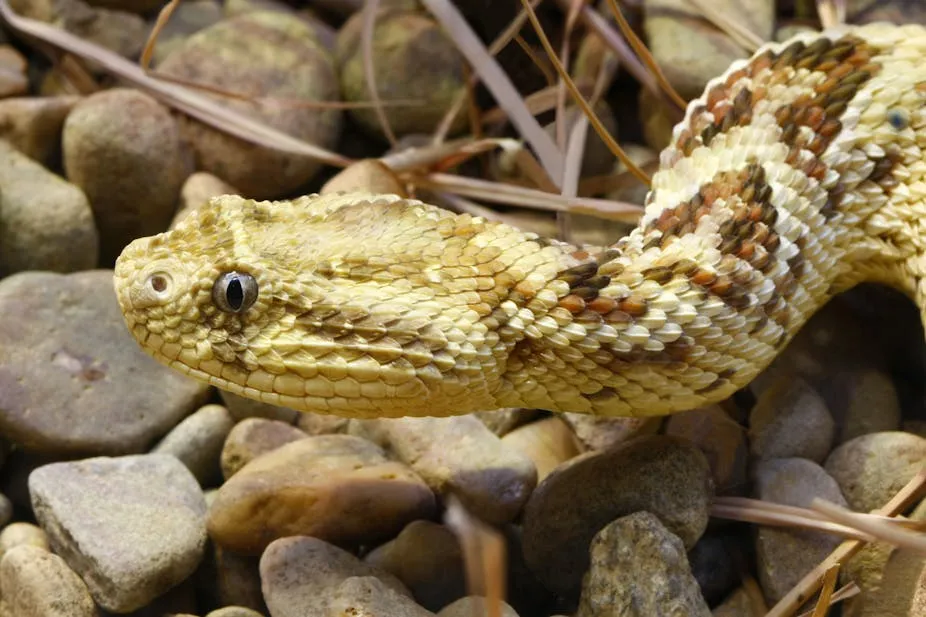The puff adder (Bitis arietans) is a venomous pit viper species native to much of the African continent; along with being one of the most widespread snakes of Africa, it is also counted among the most venomous species, and is responsible for more deaths on the continent than any other snake species. The adder, like all pit vipers, is an ambush hunter, lying in wait for possibly days at a time waiting for prey to come just close enough to bite and envenomate.

However, unlike many species of snakes, the puff adder spends nearly all of its life above ground, and only very rarely takes refuge in burrows or beneath cover such as rocks. While the adder may be a fearsome animal to humans, it is actually prey for a large number of animals; biologists have documented 42 species that prey on the puff adder, and have found that in years of extreme predation, adult adder mortality rates can approach 50% of the population! Lying in ambush leaves the snake vulnerable to any predators that may spot it, and its body is too squat for it to effectively escape by fleeing. Instead, the snake must rely on hiding in plain sight using the ultimate form of camouflage, and a secret stealth technique that has remained a mystery until now.


When approached by a predator, biologists observed that the adders remained motionless, choosing to commit to their camouflage even at the risk of being caught. Even in instances where wild dogs, meerkats and mongooses were observed walking directly over the snake, the adder exhibited no response. More interestingly, however, was the lack of response from these animals walking over them; they showed no awareness of the snakes' presence. This is bizarre because these animals (and up to 15 of the adder's predators) hunt primarily based on scent, which should bypass the effective visual camouflage of the snake. This rose a new question for biologists: are puff adders escaping scent-oriented predators by hiding or reducing their own scent?

To test the theory, a study was conducted using two of the adders typical predators: dogs and meercats. These animals were trained for "scent-matching", meaning the animals had to match pairs of scents to each other among a line-up of scent options.
Six snake species were tested in total against these scent-based predators. In 100 scent-matching trials, the dogs and meerkats were able to identify the snakes with 90% accuracy...except for one. In every trial, the puff adder sample stumped the dog and meerkat teams, and they were unable to match the two samples. The biologist concluded that the puff adder is the first known terrestrial vertebrate species to employ "chemical crypsis"; it simply does not have a detectable scent.

This chemical crypsis is the result of an evolutionary arms race. Having evolved alongside these predators that have developed better and better olfactory senses, the snake has had to evolved its own countermeasures to avoid extinction. While this is a world's first finding, the biologists remain confident that this ability is likely common in the animal kingdom. Animals that ambush their prey and experience a high mortality rate from predators, such as the puff adder, and species that reside in exposed locations, such as ground-nesting birds or young deer fawns, would be far more likely to survive if they were able to mask their odor or remain completely scentless. The only reason we are just discovering this now, it because our research is biased towards our own primary sense: our vision. Using this research, the teams hopes others will launch their own investigations into other occurrences of chemical crypsis. However, one question still remains for the research team: how is the puff adder able to employ such an effective means of camouflage?
Video Link: 1
Article Link: https://theconversation.com/

